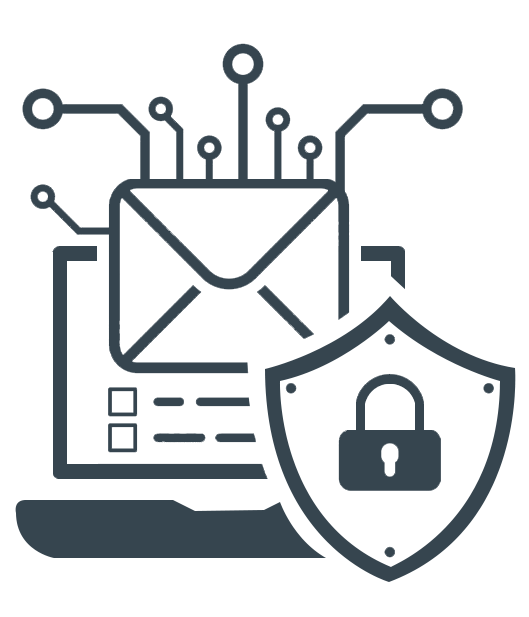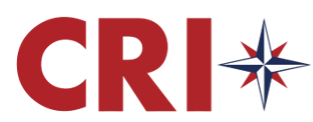Information security policy, plans and procedure support for SMBs and enterprises
Information security policy support expertise
Developing an effective IS policy is a large, time-consuming undertaking that many small and medium businesses, as well as large companies, deprioritize due to the lack of knowledge and resources.
A lack of clear guidance and consistent implementation of security protocols at all organizational levels often leads to data breaches.
Cyber attacks threaten businesses of all sizes
According to Shred-It 2020 Data Protection Report, the average data breach costs American businesses an estimated $8.64 million annually.
In the modern cybersecurity landscape, bad actors, including an increasing number associated with organized crime and nation-state-sponsored hackers are carrying out more sophisticated and broad-ranging attacks against organizations of all sizes and industries.
- zero-day malware attacks
- advanced persistent threats
- social engineering
- identity and credential theft
These are just a few methods attackers use to break through insufficient security gateways that most companies have put in place. Many organizations are falling behind in several key data security practices including training, data protection procedures, and proper information disposal.

Avoid threats, reduce risks and empower your employees to be proactive
The goal is simple. Create a plan of action that informs employees how to keep your company’s data and technology protected against outside threats.
CRI Business Solutions is here to help.
CRI will analyze your business requirements and help develop well-constructed security policies that lay out the applicable rules, regulations and procedures into clear and concise documents.
When drafting policies and procedures, CRI actively assesses an organization’s corporate culture and practices to create living functional documents that directly support business operations.
Our policies are created for ease of use, readability, regulatory compliance, and to promote comprehension and operational efficiency.
These documents serve as a resource for your employees to understand how your company stores, protects and disseminates information and set clear expectations for employee behavior in regards to information security.
Empower your employees to comply with the guidelines you specify and keep your business information safe.
Information systems safety – well documented
Organizations and companies conduct business within industries that often have highly regulated guidelines or require comprehensive best practices to ensure vital information systems are safe.
To be operationally secure, IT policies and procedures must be specified and documented to detail the people, processes and technology that are in place to keep the organization’s data and IT assets protected from unauthorized disclosure, corruption or loss.
Navigating the myriad regulatory compliance requirements can be very difficult without months or years of specialized training. Management and technical staff may be highly competent but may simply lack experience in developing comprehensive and regulatory-compliant program documentation, including IT and IS policies and procedures.
Attacks will happen. Face them with confidence.
IT security policies are your roadmap for preventing and recovering from data breaches.
A Roadmap to Manage Risk
- Methodology to determine acceptable risk
- Planned controls to reduce information security risk to the organization
Implementation and Enforcement Guidelines
- Develop training procedures
- Define rules for expected employee behavior
- Define consequences for non-compliance
A Means to Ensure Regulatory Compliance
- Develop framework to navigate the increasingly complex compliance landscape (GLBA, PCI, HIPAA, SOX, and NIST CSF, to name a few)
- Assurance against regulatory sanctions
- Document evidence of regulatory compliance
Accountability
- Defined authority/responsibilities for policy implementation
- Outline the process for assignment and acceptance of responsibilities
Awareness
- Shared understanding of the gravity of security threats
- Shared understanding of individual responsibilities in threat prevention
Top-down and bottom-up coverage
CRI’s Information Security Documentation Services ensures a standardized security policy and procedures that will be consistent in mitigating risks to your organization. This service is designed to deliver cross-departmental impact throughout your enterprise.
CEO/President
Business value and reduced risk.
Chief Information Officer
Regulatory compliance through adequate documentation
Chief Information Security Officer
Support of confidentiality, availability and integrity of the business systems, applications and data.
IT Managers/Directors/Leaders
Shared understanding of responsibilities and actions to maintain compliance.
How it works
Our information security analysts help you tailor your policies and procedures to your specific business needs and compliance requirements.
Risk Assessment
Our analysts will assess the risk to the organization’s information assets and employ this information o define the purpose, scope, responsibilities, and methods of ensuring compliance. The policy elements (controls) will be designed to reduce the risk to the confidentiality, integrity and availability of the organization’s systems and data. This control will later be articulated in the organization’s policies and procedures.
Compliance Assessment
We will inventory applicable compliance frameworks and conduct an analysis of your current regulatory compliance requirements and any existing gaps in compliance. These prescribed requirements are then combined with the risk reduction controls identified above to create the outline of your policy framework.
Determine Audience
We will analyze the intended users of the policies and procedures and tailor the level of detail and complexity to the target audience. We ensure managers have the information they need to organize and plan security program requirements, while technical staff will have specific details they need to implement technical and procedural controls.
Determine Policy Scope
Based on the information gathered above, CRI will summarize what needs to be protected, where it is, who is responsible, and a summary of the policy elements to achieve these goals.
Capture Policy Details
We will review existing policies, procedures, and job aids, and interview staff, to determine the Who, What, When, and How for each prescribed compliance or risk management requirement.
Review and Refine
We will coordinate with key staff throughout the development process to ensure the accuracy, sufficiency and clarity of policy statements, and will employ our expert quality assurance to ensure that the policies are easily understood by the intended audience.
Smarter Policies Mean Safer Business
Get well-written policies and procedures that better protect your business and its employees with CRI’s IT security documentation services.
Achieve operational security, compliance and efficiency with CRI
At CRI, we tackle challenges with innovative solutions that produce quality, cost-effective results.
Whether government or commercial, we have the experience and expertise to meet your expectations.
CRI subject matter experts are equipped with decades of experience in obtaining and maintaining compliance with multiple industry and government standards. We are certified in ISO 27001 and 9001, PCI-DSS, NIST Risk Management Frameworks, to name a few.
Written policies and procedures are not simply documents for regulators and auditors. CRI’s policy development services are for small- to medium-sized businesses and enterprises looking to ensure effective and consistent implementation of security requirements and controls.
What you’ll get
- Significant experience with document development
- Industry best practices memorialized for ongoing use and application
- Identify of deficiencies and other policy gaps and errors
- An impartial system for assessing noncompliance and remediation with clear and consistent expectations
- Subject matter expertise in specific compliance and functional areas
- Ability to properly understand internal controls and non-compliant employee behavior
- Well-drafted policies and procedures as a foundation for corporate training
- Improved long-term strategic planning and governance practices



